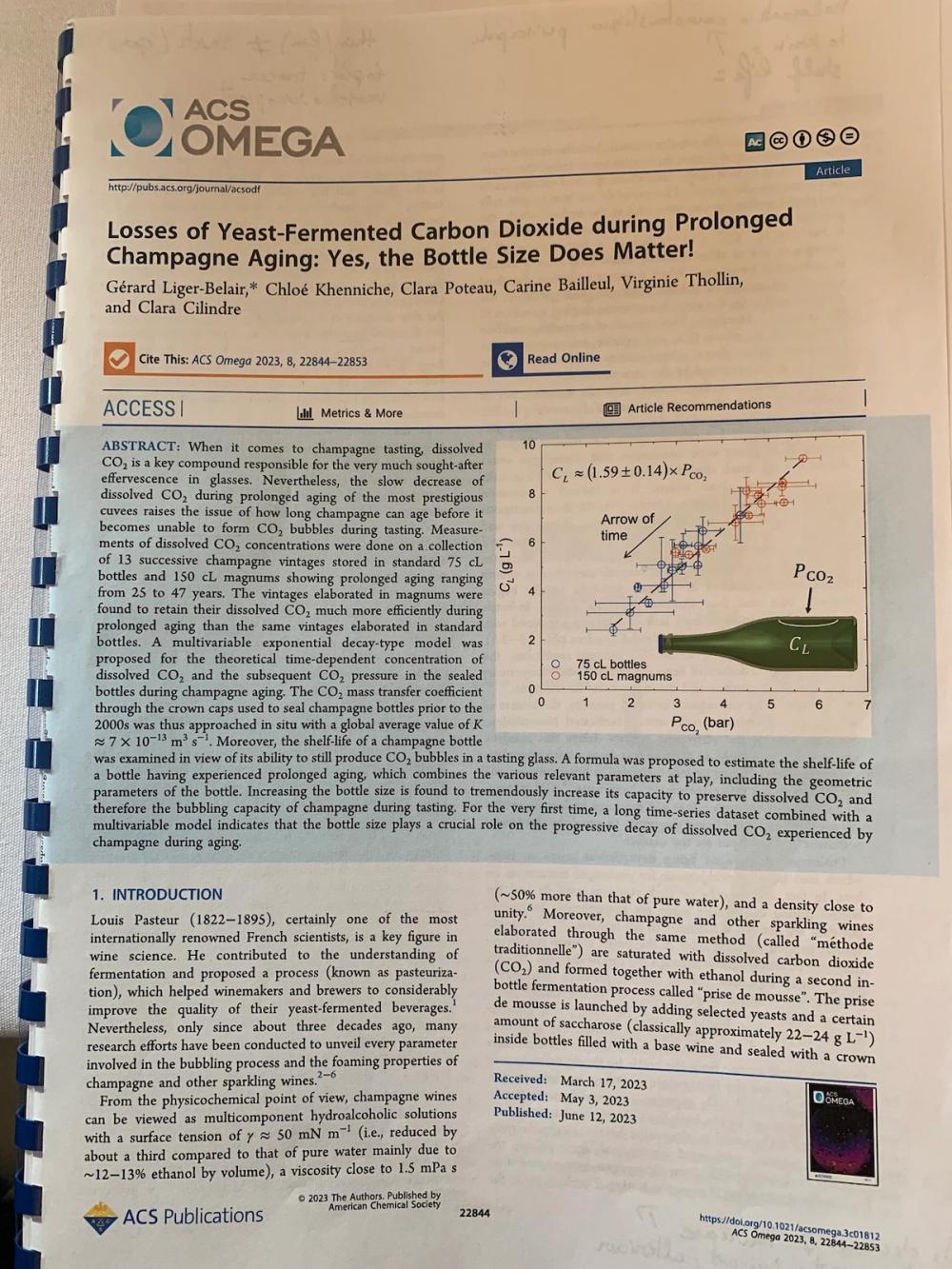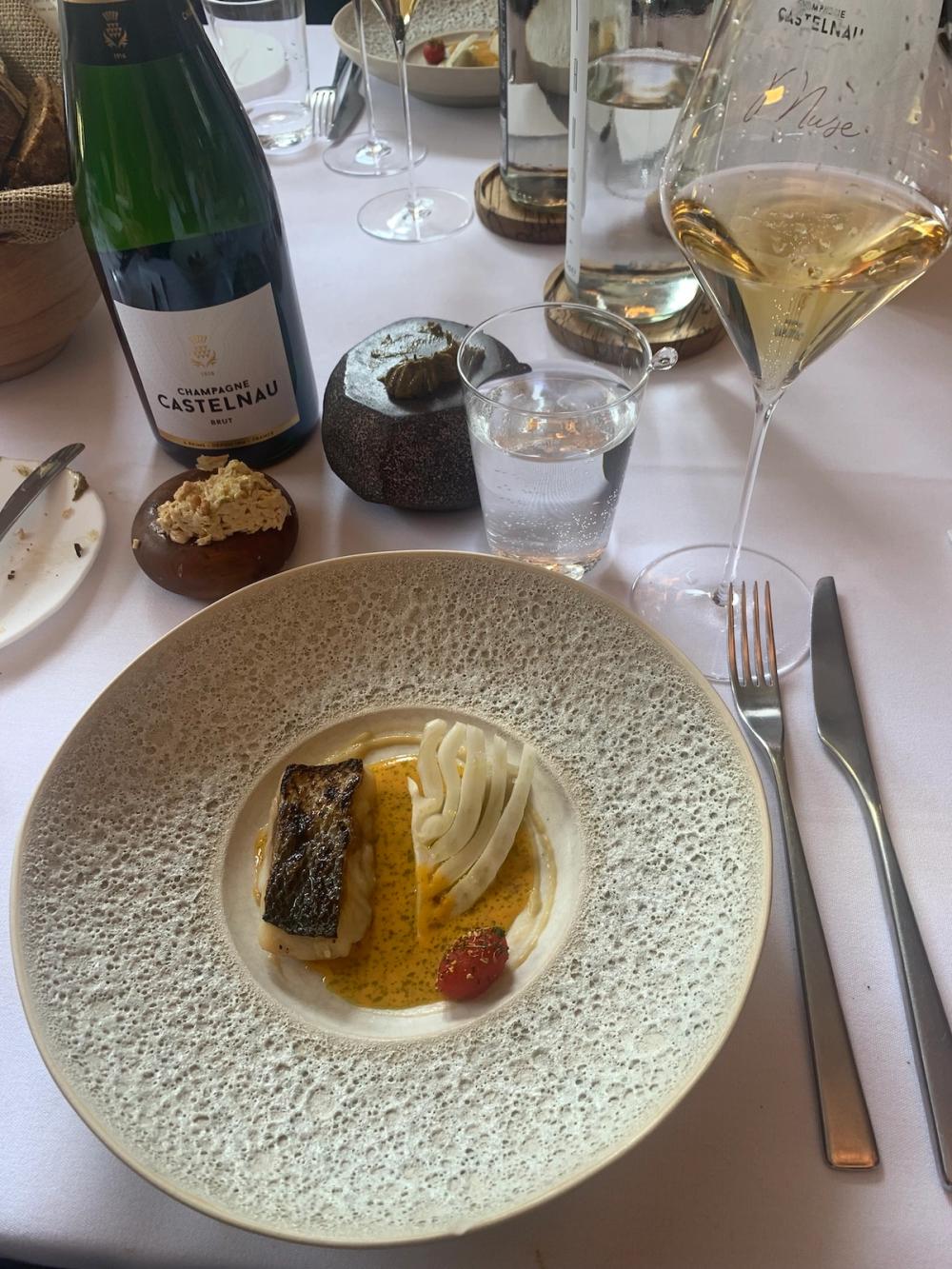“Curiously, Bailleul first came to winemaking without knowing that much about Champagne but immediately fell in love with it,” writes Smart.

Castelnau chef de caves Carine Bailleul and Victor Smart, Muse, July 2023
Why does Champagne Castelnau age its non-vintage for five or six years on the lees, rather than crate the stuff up and get it out the door? Surely, it risks blurring the all-important line between the regular non-vintage and a prestige cuvée? I don’t have an answer to that particular conundrum. But, as we gather at Muse restaurant in London’s Belgravia it doesn’t seem to matter too much. The NV is going down beautifully.
Muse by Tom Aikens is a small establishment that befits Castelnau, a smallish maison hoping to double its production of 435,000 bottles a year while keeping its long-ageing tradition intact. The top French management team (all-female) and the chef de caves, Carine Bailleul, are visiting Britain for a tasting in Leeds and this lunch in London.
You know you are in for a treat when before a lunch your ‘other half’ recognises a chef’s name and says something like, “Tom Aikens – impressive!” Today Tom is at his restaurant to fuss over us – plus there’s no provision for spitting. What’s not to like?
Castelnau is rebranding with the slogan “The Art of Delicacy”. A tracery of bubbles now adorns its labels. Bailleul, meanwhile, is brandishing a scientific paper she has co-authored. Full of fiendishly complex mathematical equations, this proves what we all thought, that Champagne tastes better from magnums. And, in answer to my question, she explains, yes, she does manage the bubble size, opting for smaller bubbles.

Things started taking a technical turn….
But all this is a distraction from the wine and food. You can tell an awful lot about how good a meal will be from that first mouthful of the bread. And the Muse’s sourdough is superlative, chewy and with the right amount of tanginess.
Le Brut (AVB 12.5%, retail £34 a bottle) is 40% Chardonnay, 40% Meunier and 20% Pinot Noir with 30% of reserve wines and a dosage of 7g/l. Mainly the 2015 vintage, it has spent a full six years on the lees. The flagship of the house, Le Brut makes a much bigger impression on me than it did when I tasted the product six years ago. In fact the first impression delivers a level of complexity and elegance that is more like a vintage offering. Above all, it is so refreshing. I wonder, do we really need to move up the range at all?

Castelnau 2006 paired with lobster, courgette and marjoram
But we do, of course, to taste the Castelnau 2006 (ABV 12.5%, retail £49) paired with lobster, courgette and marjoram. This is 50% Chardonnay, 30% Point Noir and 20% Meunier with a 7g/l dosage. Perhaps, inevitably, this hasn’t got quite the same approachability. It makes you think more and, understandably, has more complexity. Still, it has lovely toasty notes and dry fruit.
Curiously, Bailleul first came to winemaking without knowing that much about Champagne but immediately fell in love with it: the flavours including those of dry fruit immediately reminded her of standing in her grandmother’s kitchen when she was a child and the traditional Christmas desserts were being prepared.

Castelnau Blanc de Blancs paired with sea bass
Then on to the Blanc de Blancs 2008 (ABV 12.5%, £55) with an exquisite pairing of sea bass, tomatoes and fennel.
With a 7g/l dosage, Bailleul describes the Blanc de Blancs as a Chardonnay of weight and structure rather than minerality. Finally, dessert and the Brut Rosé (ABV 12.5%, £45). This is 50% Meunier, £30% Chardonnay and 20% Pinot Noir, of which 15% Pinot Noir and Meunier are vinified as red wine. This is paired with strawberry, black sesame and shiso.
The Rosé, with red and black berry fruits on display, can’t remotely compete with the 2006 and 2008 in terms of complexity and finish. But it is fun. Almost indecently approachable, it conjures up hampers, picnics and sunshine – the perfect antidote for the overthinker.
What’s apparent is that the one-Michelin starred Muse delivers far more enjoyable – and exciting – food than a three-starred restaurant I visited recently in the South of France which somewhat indulgently had turned complexity into an end in itself. Impressive indeed!
































